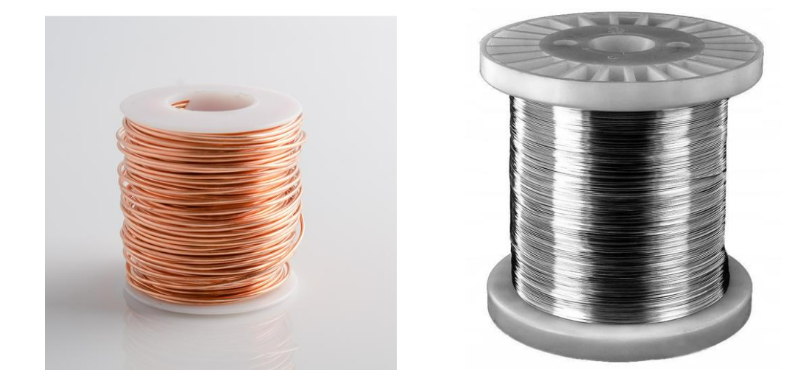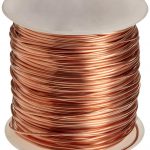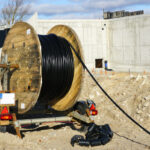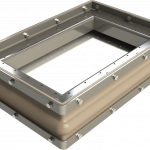The comparison between aluminum vs copper wiring is always on the front burner when it comes to electrical design. Although they are both good conductors, copper usually has the upper hand during material selection. However, each material has unique features that make it more suitable for certain applications. In this article, we discuss the dangers of aluminum wiring, the benefits of copper wiring, and finally compare the features of both materials.

Dangers of Aluminum Wiring
Aluminum is less expensive, lightweight, and more malleable vs copper wiring. As a result, offers advantages in long-distance wiring and in applications with a large network of wires. However, it has several disadvantages which reduce its popularity.
- The major danger of aluminum wiring in any electrical setup is the risk of fire hazards. Aluminum has about 40% less current capacity than copper because of its higher resistance to current flow. As a result, it generates a significant amount of heat when conducting electricity. The level of heat generation becomes dangerous during surges and could lead to the burning of its insulation and any surrounding flammable material. Another feature of aluminum that constitutes a potential fire hazard is its high thermal expansion. Over time, its expansion and contraction cycles could loosen connections at terminals, thereby increasing fire risk from arching.
- Although aluminum passivates to form an anti-corrosive oxide layer, this layer is strongly insulative to current flow. Thus, conductivity further decreases along with an increase in heat generation. As such, it is necessary to apply an anti-oxidation compound at its terminals from time to time. Also, aluminum readily reacts with water at room temperature, forming aluminum hydroxide alongside hydrogen deposits. This puts it at risk of dissolution when used in underground applications, especially in areas that experience frequent flooding and earthquakes.
- Another issue with aluminum wiring is that voltage drops become significant for longer runs. So, there is often a need to increase the size of the wire to compensate for these losses.
Benefits of Copper Wiring
Currently, copper provides the predominant material for making power cables. However, prior to the 1960s, its popularity waned as aluminum wiring gained prominence in American homes. But by the 1990s, copper retook its place as the preferred option due to several advantages.
- Copper is an excellent conductor of electricity. As a result, the diameter of copper wiring can be much smaller than aluminum but still carry more current. This enables it to transmit more power without overheating, thus, minimizing the risk of fires. Also, the use of smaller cables allows multiple conductors to share the same raceways, which creates an avenue for cost savings. In addition, copper has low thermal expansion, meaning that terminals remain secure despite several contraction and expansion cycles.
- Copper has up to 40% more tensile strength than aluminum. Therefore, it can undergo extreme stress during installation and operation with minimal risk of wear and tear. This allows the use of thinner-diameter wires without breakage issues.
- When copper oxidizes, it remains a great conductor. As a result, it can last long despite operating in tough conditions. Because of this robustness, it is ideal for underground applications where it is not susceptible to dissolution.
Differences Between Aluminum and Copper Wiring
| Parameter | Difference |
| Cost | Aluminum offers a cheaper wiring option than copper because of the difference in production cost. Moreover, copper is a scarcer element to source, which makes it more expensive. In addition, its rigidity means it requires more time and effort in manufacturing to a certain length and diameter. As a result, cost savings when using aluminum over copper could be up to 50%. |
| Durability | The use of aluminum wiring results in higher maintenance costs in comparison to copper. First, aluminum’s contraction and expansion cycles are significant, so requires regular inspection of terminals to assess connections. Also, its exposed parts need periodic cleaning and application of an anti-oxidation compound to improve longevity. |
| Maintenance | Aluminum oxidizes to form an insulative material that further restricts the flow of electricity, while that of copper remains conductive. Because of oxidation, the lifespan of aluminum wiring is usually around 80 years, while that of copper could be in excess of 100years. |
| Oxidation | Aluminum oxidizes to form an insulative material that further restricts the flow of electricity, while that of copper remains conductive. Because of oxidation, the lifespan of aluminum wiring is usually around 80 years, while that of copper could be in excess of 100 years. |
| Weight | Copper weighs roughly 70% more than aluminum. As such, when installing large amounts, it becomes more difficult to handle. |
| Conductivity | Copper is a better conductor of heat and electricity than aluminum. So, it is less likely to overheat. Moreover, aluminum wires need to have a 56% larger cross-sectional area than copper to carry the same current. |



